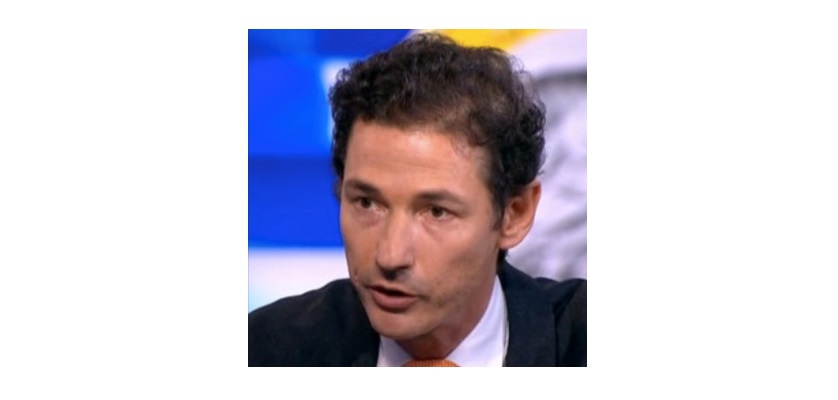Is the rise of centrist politicians/politics in western democracies the death knell of the age-old two-party system? Economist and historian Gilles Bransbourg investigates.

...
Is the rise of centrist politicians/politics in western democracies the death knell of the age-old two-party system? Economist and historian Gilles Bransbourg investigates.
In France, the traditional parties from the left and the right have been dwarfed by Emmanuel Macron’s landslide victory. In the US, surprising all political analysts, President Trump has reached an agreement with key Democrat leaders in two very key areas – the budget and the fate of the ‘Dreamers’; these undocumented immigrants who came to the US as children. More may follow. In the UK, after UKIP sabotaged itself, Boris Johnson has renewed a push for a harder Brexit, while the Labour leadership is drifting in the opposite direction, getting closer to those in the Conservative Party who hold similar views on Europe. The markets have almost driven the British Pound back to where it stood before the referendum, as if nothing had happened. Austria, where the Far Right candidate was defeated during the 2016 presidential election, is witnessing the emergence of a charismatic young politician - Sebastian Kurz - around a Centrist platform. Obviously, the boring German elections brought back Ms. Merkel, who would have enjoyed a Macronesque parliamentary dominance without the proportional component of Germany’s electoral system. At the same time, both the Liberals and the Far-Right increased their shares of the votes, reinforcing the chances of centrist governance to carry on.
These events are not isolated. The two-party system that most western democracies have practiced for decades is ending. Then there is the rise of the Centre. Pundits were hypnotized by the rise of populist parties, looking at UKIP or the "Front National" as proof that democracies were threatened by extremes. In reality, they never had a serious chance of reaching a governing majority in any major country. What they have achieved instead is reducing the political space available to traditional parties. As a result, it was just a matter of time until dominant forces would coalesce in the Centre of the political spectrum.
Bipolar systems best fit with societies where one single issue dominates the political debate. Since WWII and the implementation of Keynesian policies – namely that the State redistributes (and taxes) a significant share of the economy – those who aim at lower taxes and less social welfare sit on the right, while those with opposite views are on the left. However, historically other issues that are incompatible with a two-party political system have dwarfed such economic concerns – think of slavery, civil rights and isolationism debates in the US; the colonial and religious question in France at the turn of the 20th century, or the conflicts around enclosures, free trade and protectionism in 18th and 19th century England. The more multidimensional public choices become, the less likely they are to fit within a linear right-left duality.
Today, the question of European federalism, openness to immigration, the role of religions, the rise of inequality, global warming, free trade, globalization, new technologies, aging public infrastructures, crumbling retirement and health care systems, public deficit and debt; few of these questions fall into line within a straight two-party system. Many people who supported Sanders opted for Trump. Clinton appealed to a range of moderate Republicans. In the UK, Brexit is bringing many members of the Conservative and Labour parties closer together – not to mention the Lib Dems. The potential for a political upheaval is there.
France was the first one to propel a new political force to prominence. Its two-round electoral system did help, while the one-round winner-take-all system in the US and the UK raises the bar for a third-party. However, the Republican party under Lincoln’s leadership and Labour in the UK after WWI rose to sudden prominence from nowhere. In a way, a one-round system can prove more lethal for established parties – as it did for the Liberals in Britain in the 1920s and the Whigs in the US in the1850s. The rise of centrist parties in the Anglo-Saxon sphere may as such take an even more dramatic turn.
Now, what do Centrists aim at? Pragmatists, they seek efficiency, are wary of ideologies, and tend to avoid radical solutions that would harm the establishment. They make sure their electorate fear the left and the right. Their main role is to preserve most vested interests, which does not mean they cannot implement truly needed reforms at the same time. They can reach fantastic levels of popularity: Georges Clemenceau battled Socialists on his left and Nationalists on his right for most of his political life, then led France to victory in 1918 to become a living legend. With no entrenched ideological agenda, supported by advisers and aides who belong to the financial elite, Trump, like Macron, may paradoxically be one of them.
However, ruling in the middle reinforces radicalization of political oppositions. When things go sour, opportunities arise for those on the fringes of the political spectrum. This is how Hitler rose to power in 1933 – democratically. And fundamental factors of instability are on the rise. Wealthy, aging western societies live side by side with failed nations where poverty and explosive demographics create overwhelming pressure and nurture extreme ideologies. New corporate powers behave increasingly independently from national interests. The digital revolution implies massive social transformations and unparalleled leverage for those in control. An autocratic China asserts its burgeoning hegemony over Asia and beyond.
In that context, we need to remember that leaders who materialize a median path between two extremes do not necessarily reject political authoritarianism when needed – as demonstrated by Louis-Napoléon Bonaparte in 1851, or to some extent by FDR in 1933 and Charles de Gaulle in 1958. Democracies are more fragile when ruled from the Centre.
A strong US, with all the counter-powers that have insulated it so far from the risk of dictatorship, may prove even more necessary for world peace and the minimal respect of core fundamental humanist values in the future than it has ever been since WWII.








COMMENTS